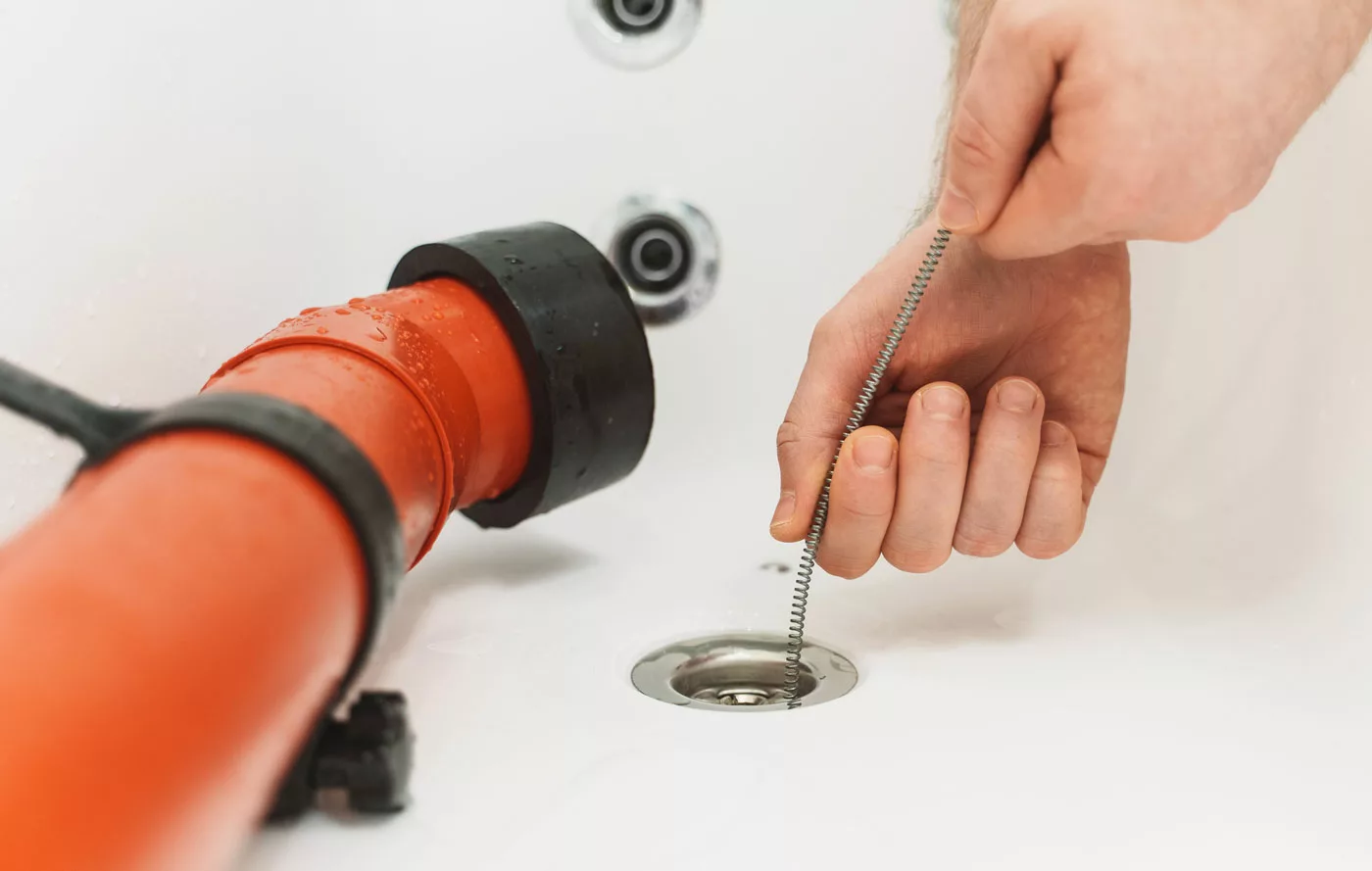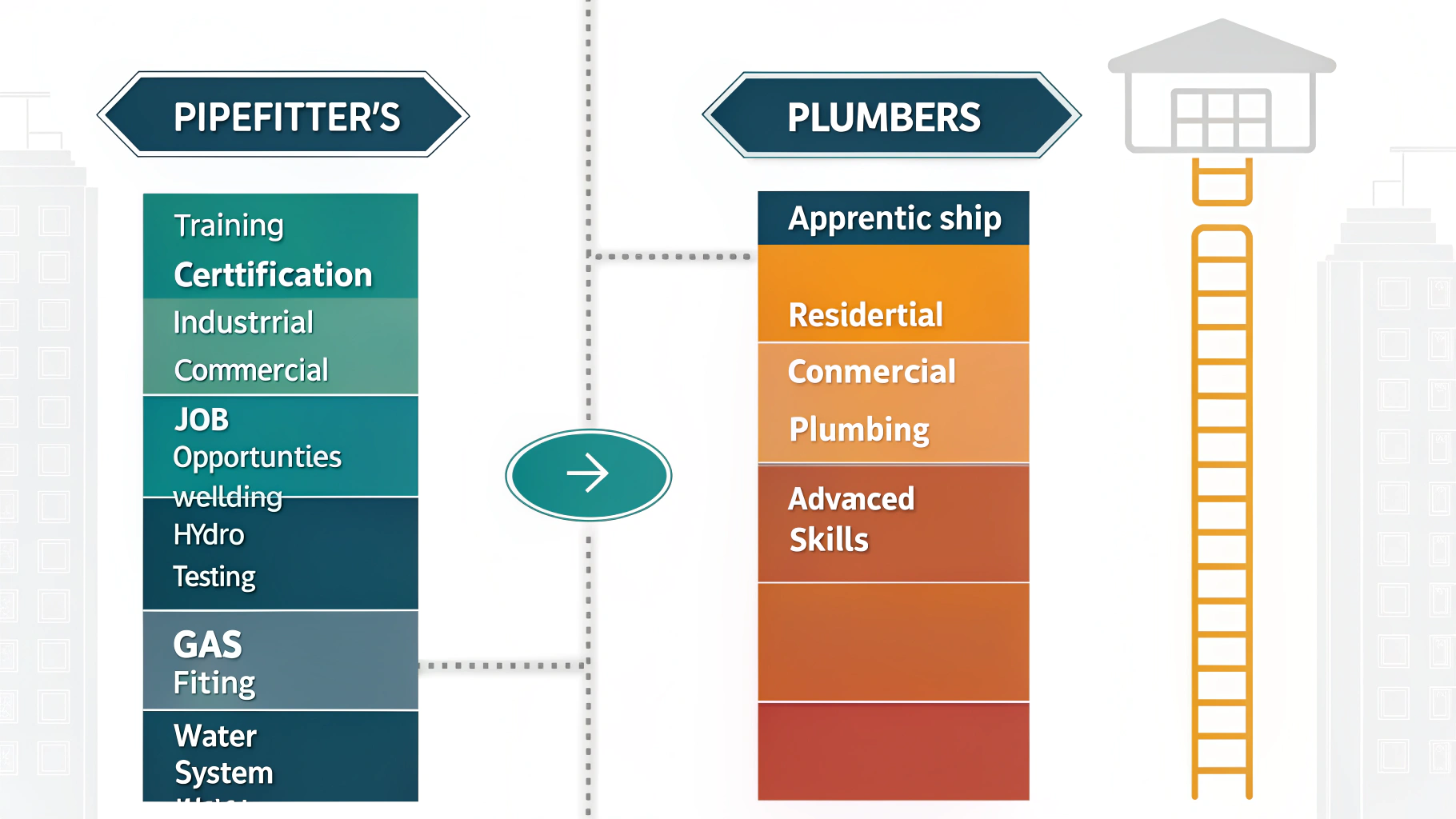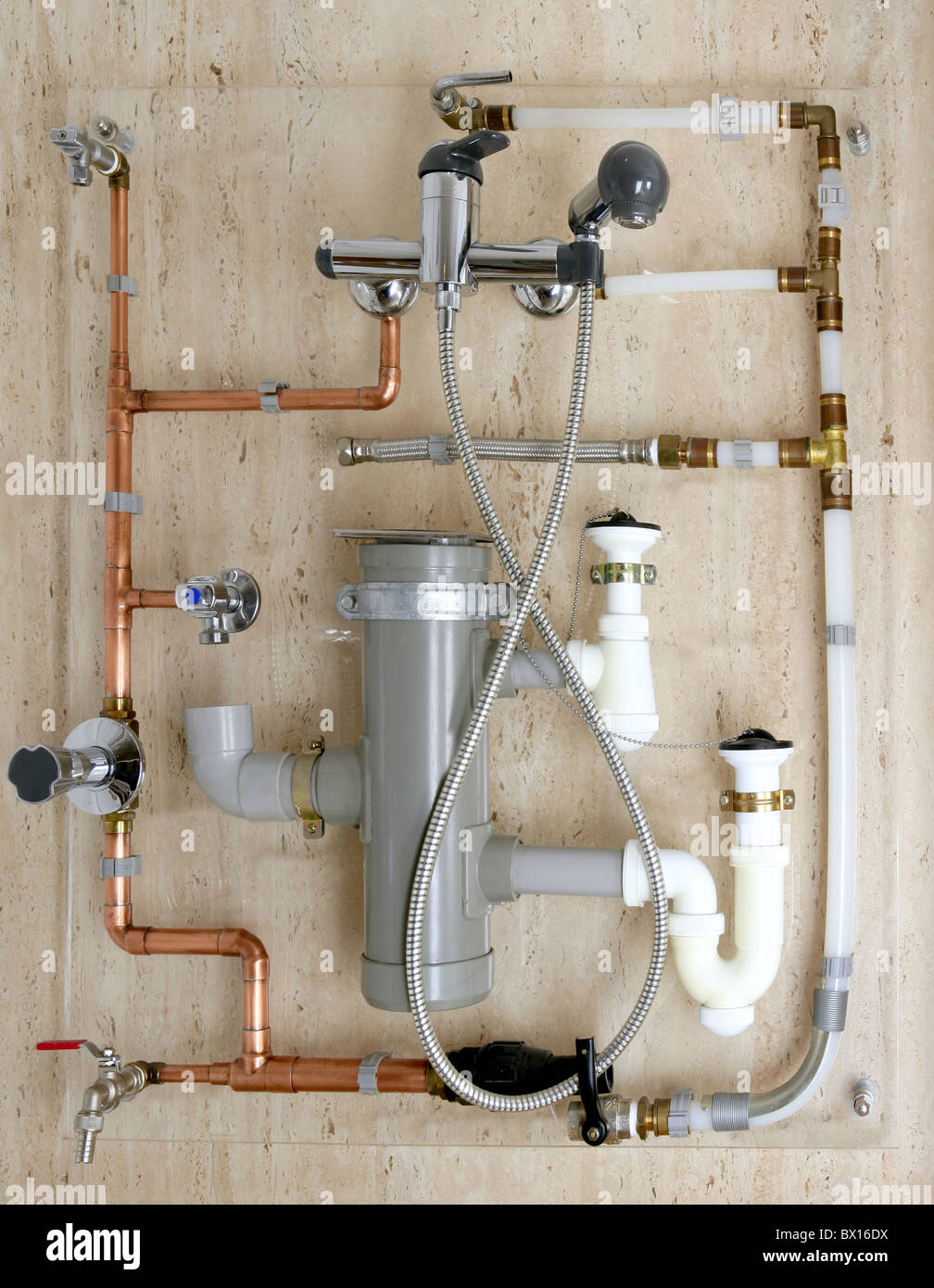If you're considering a career as a pipefitter or plumber, you're looking at two essential trades that are often misunderstood, even confused with each other. The distinction became crystal clear to me during a summer working with my uncle's contracting company. One week, I watched pipefitters at a power plant welding massive steam lines under intense pressure. The next, I followed a plumber through a 1920s apartment building, carefully retrofitting century-old drainage systems. Both professionals work with pipes, but their daily realities, skill requirements, and career trajectories are surprisingly different. Let’s clarify these careers so you can align your skills with the right path.
Pipefitter vs. Plumber Jobs: Core Duties Compared
Pipefitters: Industrial Pressure Experts
Pipefitters handle high-pressure systems in factories, power plants, and chemical facilities. Their day might involve welding stainless steel pipes for a hydrogen fuel line or pressure-testing a steam network with hydrostatic testers (devices that check durability under extreme stress). Unlike plumbers, they rarely touch water supply lines. Instead, they focus on moving steam, acids, or gases, which are often in hazardous environments requiring flame-resistant suits 12.
 Real-World Example: At a Texas oil refinery, pipefitter Maria Gonzales spent three weeks assembling cryogenic piping (systems for -150°F liquids) to transport liquefied natural gas. One misaligned weld could’ve caused a catastrophic rupture, so her team used laser-guided tools to ensure millimeter precision.
Real-World Example: At a Texas oil refinery, pipefitter Maria Gonzales spent three weeks assembling cryogenic piping (systems for -150°F liquids) to transport liquefied natural gas. One misaligned weld could’ve caused a catastrophic rupture, so her team used laser-guided tools to ensure millimeter precision.
 Plumbers: Water System Specialists
Plumbers: Water System Specialists
On the other hand, plumbers maintain residential and commercial water systems. Their tasks range from unclogging apartment drainpipes to installing tankless water heaters. While they occasionally repair gas lines, their expertise centers on potable water and sewage. Materials like copper and PVC dominate their work, with strict adherence to building codes 3.
 Real-World Example: During a Chicago winter deep freeze, plumber Jake Thompson responded to a burst pipe in a high-rise. After shutting off the main line, he installed a PEX piping bypass to restore heat within hours, skills he honed through years of code certification courses.
Real-World Example: During a Chicago winter deep freeze, plumber Jake Thompson responded to a burst pipe in a high-rise. After shutting off the main line, he installed a PEX piping bypass to restore heat within hours, skills he honed through years of code certification courses.

Training Paths: From Classrooms to Complex Systems
Pipefitter Training (4–5 Years)
- Learn: Welding, metallurgy (metal behavior under heat/stress), and blueprint math for industrial layouts.
- Certify: Many states require ASME welding certifications for steam systems 45.
- Evolve: Rising demand in hydrogen pipeline and carbon capture sectors 67.
Plumber Training (2–5 Years)
-
Learn: Local plumbing codes, fixture installation, and emergency leak repair.
-
Certify: All 50 states mandate licensing; some require business law exams for contractors 89.
-
Evolve: Expertise in greywater recycling and smart leak detection systems 1011.

Licensing and Toolkits: What’s in Your Belt?
| Aspect |
Pipefitters |
Plumbers |
| Licensing |
Varies by state (e.g., MA requires mechanical licenses) |
Universal state licenses (apprentice → master) |
| Daily Tools |
Welding torches, pipe threaders, pressure gauges |
Pipe wrenches, drain snakes, soldering kits |
| Key Safety Gear |
Flame-resistant suits, respirators |
Rubber gloves, knee pads |
|
|
|
Job Growth and Salaries: 2025 Outlook
- Growth:
- Pipefitters: 8% (driven by renewable energy plants) 6.
- Plumbers: 6% (aging water infrastructure needs) 10.
- Salaries:
- Pipefitters: $58K–$75K (higher in unionized industrial roles) 14.
- Plumbers: $55K–$73K (top earners run specialty HVAC/water treatment firms) 15.
Safety First: Different Risks, Different Rules
Pipefitters follow ASME boiler safety codes and endure rigorous drug tests due to nuclear/chemical site work. A Tulsa pipefitter I interviewed told me, “We’re trained to smell mercaptan (a gas additive) at 1 part per million. Miss that, and you’re risking an explosion.”
We’re trained to smell mercaptan (a gas additive) at 1 part per million. Miss that, and you’re risking an explosion.
Plumbers face mold, sewage backups, and lead pipe risks. Their PPE focuses on respirators and cut-resistant gloves. Modern “no-dig” pipe repair tech reduces trench cave-in dangers 1617.

Myths Debunked
- ❌ “Plumbers fix gas lines.” → Most states restrict gas work to licensed HVAC techs.
- ❌ “Pipefitters do underwater welding.” → That’s a distinct trade (commercial diving).
Your Career Verdict
Choose pipefitting if:
✅ You thrive in structured, high-stakes industrial teams.
✅ Math/physics problems excite you.
Choose plumbing if:
✅ You want flexible hours/self-employment options.
✅ Solving home water issues brings satisfaction.
Both careers offer excellent long-term prospects. Plumbers ensure our daily water needs are met, while pipefitters construct the energy infrastructure that powers our future. Now that you understand what each trade really involves, which path aligns better with your goals and interests?
Sources: Bureau of Labor Statistics 2025 data, ASME standards, interviews with UA Local 150 pipefitters and Master Plumbers Association members [A-J].

